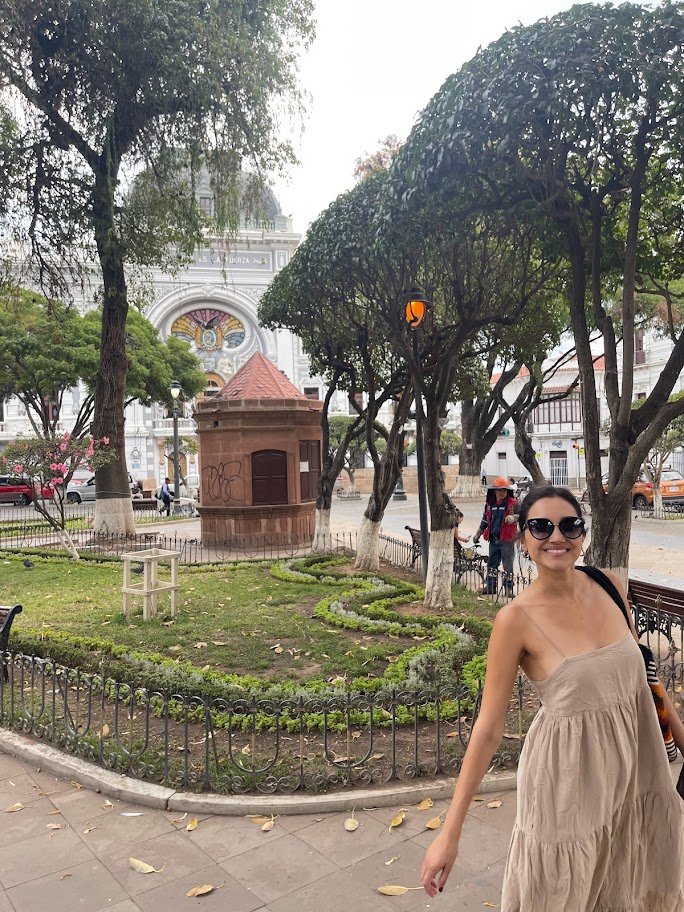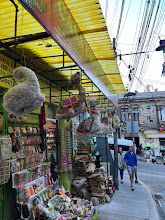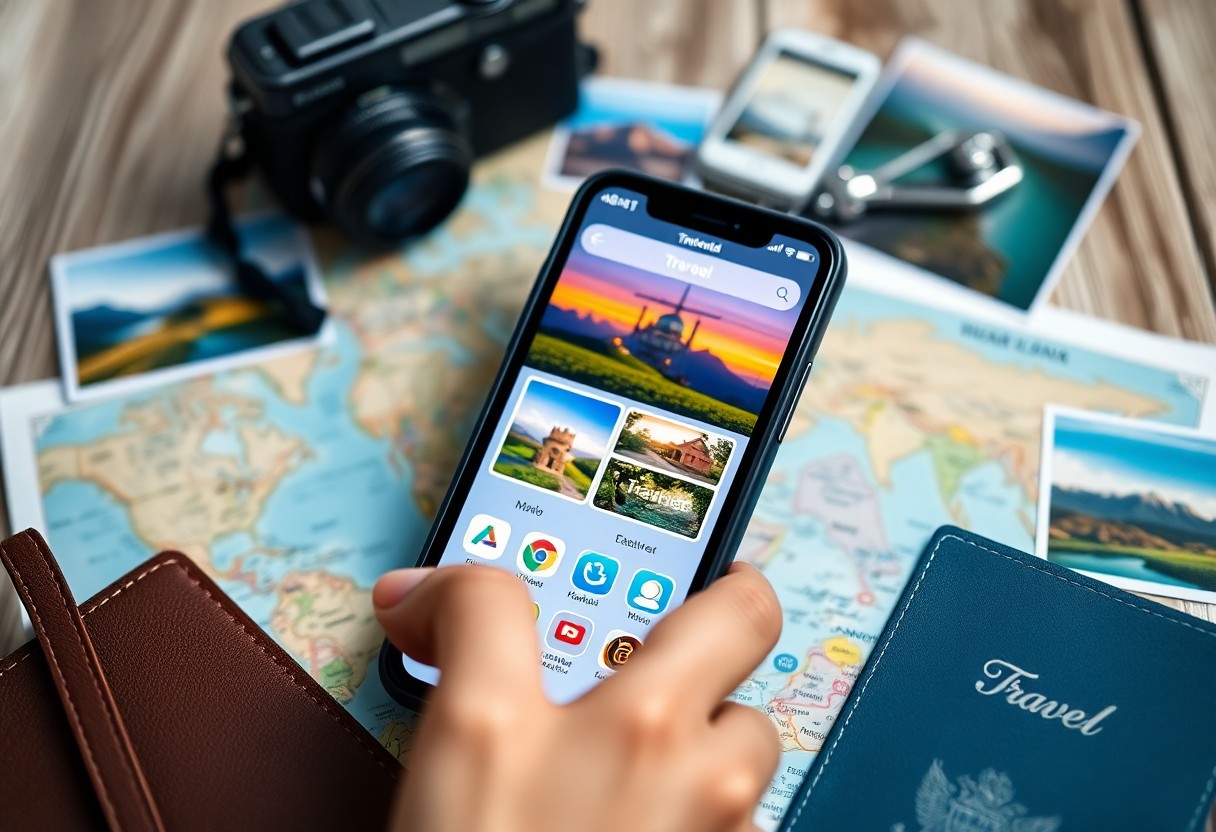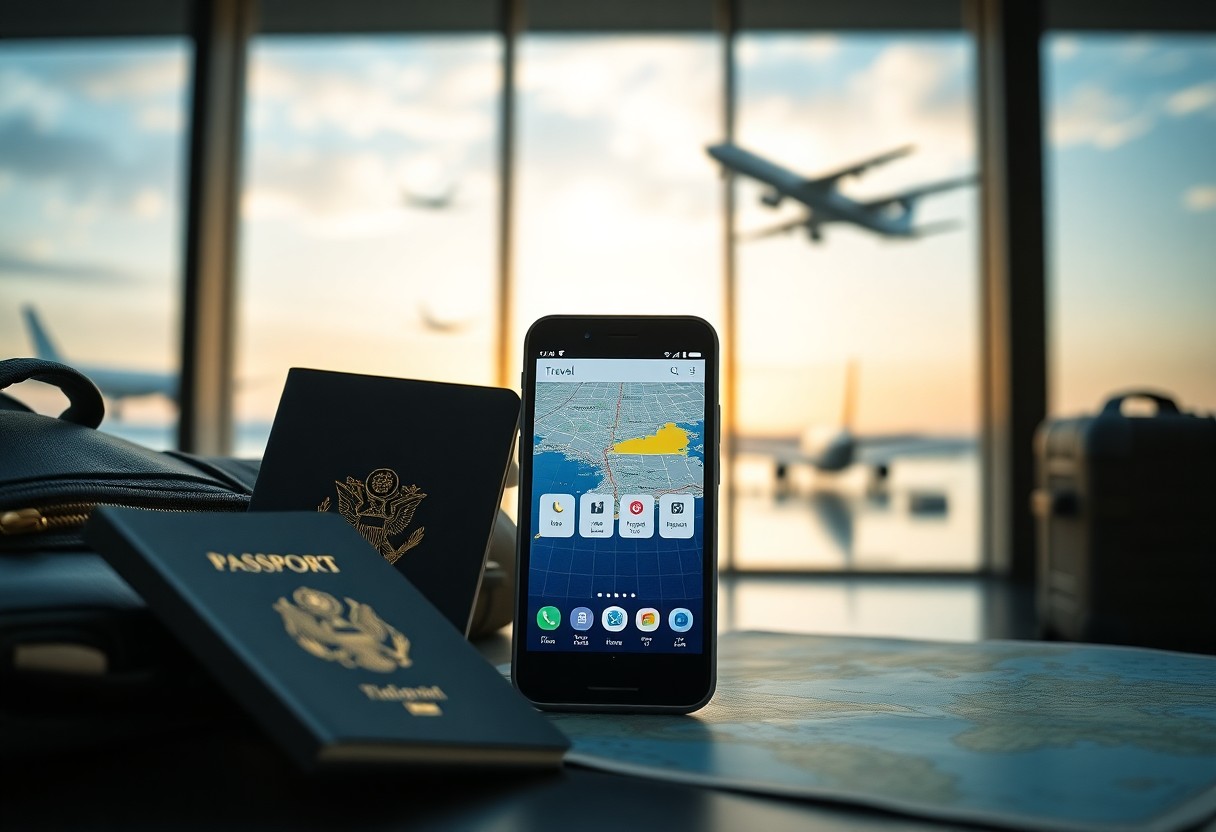Bolivia offers a rich tapestry of landscapes and cultures waiting for you to explore. To ensure a safe and enjoyable journey, it’s crucial to be well-prepared. This guide features 17 crucial tips that cover everything from altitude sickness to cultural etiquette. Knowing these tips will enhance your adventure in Bolivia while keeping you informed of any potential challenges. For a more connected experience, consider using Travel Vivir, the app that matches you with like-minded travelers, available on the App Store and Google Play. Let’s look into what you need to navigate this beautiful country.

Palacio De Sal, Salt Hotel in Bolivia
Key Takeaways:
- Timing is Key: When planning your trip to Bolivia, consider the weather. The best months to visit are from May to October, as you’ll enjoy sunny days and mild temperatures, perfect for outdoor adventures. Thus, using the Travel Vivir app can help you find travel companions during peak season.
- Health Precautions: Before heading to Bolivia, ensure your vaccinations are up to date, particularly for yellow fever and hepatitis A. Additionally, taking antimalarial medication is advisable if you plan to explore the lowlands.
- Culture and Communication: Learning some Spanish phrases can enhance your experience in Bolivia. Engaging with locals becomes easier when you converse in their language. Travel Vivir connects you with fellow travelers who can share experience as you immerse yourself in Bolivian culture.
How to Plan Your Visit to Bolivia
While planning your trip to Bolivia, it’s necessary to consider various factors such as weather, safety, and your personal interests. Utilize resources like the Bolivia Travel Guide [2024] – Everything to Know to craft an itinerary that ensures a memorable adventure. Be sure to incorporate the Travel Vivir app, which helps you connect with like-minded travelers!
Tips for Choosing the Right Time to Go
The timing of your Bolivia adventure can greatly impact your experience. Consider the following recommendations:
- High season from May to October is ideal for sunny weather.
- Shoulder season (October to November) offers pleasant conditions for exploring the Salar de Uyuni.
- Low season (November to April) brings hot, rainy weather that may disrupt activities.
The right timing can enhance your journey, ensuring you enjoy the best of Bolivia.
How to Check Visa Requirements
If you’re wondering about visa requirements for Bolivia, it’s important to verify what you might need before traveling.
This typically involves checking regulations based on your nationality. Many visitors, such as citizens from the UK and most EU countries, can enter Bolivia without a visa. However, travelers from countries like the US will need to apply for a visa beforehand. Always consult your local Bolivian embassy or consulate for the latest rules, as this can prevent travel disruptions. Knowing whether you need a visa is especially important to avoid complications upon arrival.
How to Explore Bolivia’s Diversity
Now, as you plan your adventure in Bolivia, consider the country’s incredible landscapes and cultures beyond the Andes. From the lush Amazon Basin to the arid Chaco, you’ll discover a variety of ecosystems and experiences. Embrace the natural beauty and vibrant communities, enriching your trip with diverse encounters that showcase Bolivia’s unique charm.
Tips for Traveling Beyond the Andes, Bolivia
With a bit of planning, you can seamlessly explore Bolivia’s diverse regions. Here are some tips to enhance your journey:
- Travel to the Amazon Basin for dense rainforests and wildlife.
- Visit the Gran Chiquitania region for its unique culture and architecture.
- Explore the Chaco wilderness for stunning landscapes and adventure.
The key is to embrace the different facets of Bolivia.
Factors for Considering Health Precautions
Bolivia is a land rich in natural beauty, but taking health precautions is vital for your safety. Be aware of potential health risks related to altitude, diseases, and water quality. Here are some important factors:
- Check for altitude sickness if you’re visiting highlands.
- Consider antimalarial medication for lowland regions.
- Drink only bottled water or purified water to avoid illness.
Any lapse in attention to health risks could dampen your experience.
Beyond these considerations, it’s vital to protect yourself against various health risks while traveling in Bolivia. If you’re commenceing on hikes or excursions, take preventive measures seriously. You’ll need to be vigilant about altitude sickness, especially in western areas like La Paz and the Salar de Uyuni. Bring along necessary medications and plan for gradual acclimatization. Furthermore, consider having antimalarial medication for the Amazon region. Always opt for bottled water to avoid waterborne illnesses that could ruin your trip. Any oversight in health precautions may lead to uncomfortable situations.
How to Prepare for Your Journey
Once again, preparing for your trip to Bolivia means understanding the unique aspects of this beautiful country. From altitude adjustments to cultural differences, ensuring you’re ready will enhance your experience. Before you leave, be informed about visa requirements, necessary vaccinations, and crucial travel tips. Utilize resources like the Travel Vivir app to connect with fellow travelers who can share their insights and advice, making your adventure seamless and memorable. Download it today from the App Store or Google Play.
Tips for Packing the Right Gear for Bolivia
Your packing list should include crucials tailored for Bolivia‘s diverse climates and terrain. Focus on these items:
- Rain jacket for unexpected weather.
- Walking boots for trekking.
- Thermal underlayers for chilly altiplano nights.
- Sunglasses for sunny days.
The right gear will ensure you’re comfortable and ready for any adventure!
How to Handle Local Currency
You should be aware that handling local currency in Bolivia can be a bit different. Always carry enough cash, especially when visiting rural areas where ATMs are scarce. The Boliviano is the official currency, but avoid accepting torn or damaged notes as they can be difficult to spend. In larger cities, you’ll find ATMs, but these may impose limits on withdrawals.
Journeying through Bolivia highlights the importance of understanding the currency system. Bring both small and large denominations to simplify purchases. Additionally, if you need cash in remote areas, plan ahead so you don’t find yourself struggling with costs. Utilizing Travel Vivir provides tips on currency exchange and connecting with travelers facing similar concerns. Always check exchange rates before your trip to avoid any surprises.
How to Navigate Cultural Etiquette
Your understanding of Bolivia’s cultural etiquette can significantly enhance your travel experience. Engaging with local customs is important, so consider submerging into First Trip to Bolivia- What to Expect: A First Time Visitor’s …. You’ll find that small gestures can go a long way in fostering goodwill with the people you meet.
Tips for Social Interactions in Bolivia
Now, as you interact with locals in Bolivia, keep these key tips in mind:
- Greet with a polite buenos días or buenas tardes.
- Address people using señor or señora to show respect.
- Use formal language when approaching strangers.
Perceiving the importance of these norms will help you build meaningful connections.
How to Approach Photography Respectfully
Navigate photography in Bolivia with sensitivity to cultural norms. Always ask for permission before taking a photo of someone, especially in rural areas. Many Bolivians, particularly from minority groups, may not want their image captured. Another important aspect is to respect wishes when someone declines. This practice not only demonstrates respect but also fosters a positive relationship with local communities. Respecting these boundaries ensures a rewarding experience, while helping you avoid conflicts and misunderstandings.
How to Ensure Your Safety
Unlike many destinations, Bolivia presents unique safety considerations for travelers. Understanding local customs and staying informed about current events can enhance your experience. Always remain aware of your surroundings and trust your instincts. Familiarize yourself with emergency numbers and local health services to be prepared for any situation. When you’re out exploring, consider traveling in groups and using reputable transportation options to bolster your safety.
Tips for Protecting Against Altitude Sickness
Ensure you take altitude sickness seriously while visiting Bolivia. The high elevations can pose health risks. Here are some tips:
- Acclimatize gradually to the elevation.
- Stay hydrated by drinking plenty of fluids.
- Avoid exertion and heavy meals during the first days.
- Consider using coca tea to help ease symptoms.
Perceiving the importance of gradual acclimatization can prevent serious complications.
Factors to Consider for Women Travelers in Bolivia
For women travelers, Bolivia may present unique challenges. Awareness of your surroundings is vital. Here are vital factors to consider:
- Dress modestly to blend in with local customs.
- Travel in groups, especially at night.
- Avoid secluded areas and be cautious during festive periods.
- Understand that harassment can occur, particularly in crowded places.
After considering these factors, you can enjoy your trip with greater peace of mind.
Sickness related to altitude can affect anyone, regardless of fitness level. In western Bolivia, many destinations exceed 3000m, increasing the risk of altitude sickness. You should take the time to acclimatize properly. Symptoms may include headaches and nausea, and the effects can worsen rapidly. If you feel unwell, don’t hesitate to descend and seek help. Awareness of your health will enhance your travel experience. After addressing any health concerns, you can focus on exploring the stunning landscapes of Bolivia.
How to Respect Bolivia Laws and Customs
After you arrive in Bolivia, understanding the local laws and customs is necessary for a smooth trip. Engaging respectfully with the culture can enhance your experience and enrich your interactions. For key insights on navigating Bolivia, check Everything You Need To Know Before You Visit Bolivia. With Travel Vivir, you can connect with fellow travelers who share similar interests while exploring Bolivia’s diverse landscapes.
Tips for Understanding Coca Regulations
Bolivia’s coca plant holds cultural significance, but regulations are strict. Here are some tips to observe:
- Understand that while coca products are legal in Bolivia, taking them out of the country is illegal.
- Always seek permission before taking photos of individuals associated with coca traditions.
- Adhere to local customs, especially in rural areas where coca use is more prevalent.
Perceiving coca as a tradition, rather than a recreational drug, will help you navigate any cultural nuances.
How to Approach LGBTIQ+ Issues in Bolivia
If you identify as a member of the LGBTIQ+ community, being aware of local sentiments is important. Bolivia’s legal framework prohibits discrimination, however, the reality is nuanced. You may face challenges related to social acceptance.
Laws in Bolivia protect against discrimination, but same-sex marriage remains illegal, and societal prejudice persists. In larger cities like La Paz and Santa Cruz, you can find LGBTIQ+ communities and engaging spaces. Nonetheless, public displays of affection in rural areas might elicit unwanted attention. Respect local customs while enjoying your experience with Travel Vivir, and connect with like-minded individuals on your journey through Bolivia.
17 Essential Tips for Your Bolivia Adventure: What You Need to Know Before You Go
Following this comprehensive guide, you’ll be well-prepared for your adventure in Bolivia. Understanding the right timing, safety measures, and cultural etiquette will enhance your experience. Additionally, packing wisely and planning your travel routes can help you navigate this diverse country. Utilize Travel Vivir to connect with like-minded travelers and share tips along the way. With the right preparation and knowledge, your journey through Bolivia will be unforgettable. Find the Travel Vivir app on the App Store and Google Play to start your adventure today!
FAQ
Q: What is the best time to visit Bolivia for outdoor activities?
A: The ideal time to explore Bolivia and enjoy outdoor adventures is from May to October. During this high season, the weather is typically sunny, making it perfect for trekking and other adventures. However, temperatures can drop sharply in higher regions, so it’s wise to pack warm layers. Travel Vivir can help you connect with fellow travelers planning similar adventures, ensuring your trip is both enjoyable and well-planned.
Q: Do I need a visa to travel to Bolivia?
A: Fortunately, many travelers do not need a tourist visa for Bolivia. Citizens from the UK, most EU countries, Canada, Australia, New Zealand, and Japan can visit without a visa. However, travelers from the US typically need one. To avoid any issues, check the latest visa requirements with your local Bolivian embassy or consulate before your trip.
Q: How can I stay safe while traveling in Bolivia?
A: Staying safe in Bolivia involves being aware of your surroundings and preparing in advance. For instance, pack cash for rural areas since ATMs are sparse. Additionally, it’s beneficial to be respectful and use Spanish greetings when interacting with locals. Travel Vivir provides a platform for meeting like-minded travelers, enabling you to share tips and insights on staying safe while enjoying your Bolivia adventure.
Contact us for more information:
Check out our socials and make sure to follow!
www.instagram.com/travel.vivir









Comments
Gab networking
gab I truly appreciate your technique of writing a blog. I added it to my bookmark site list and will